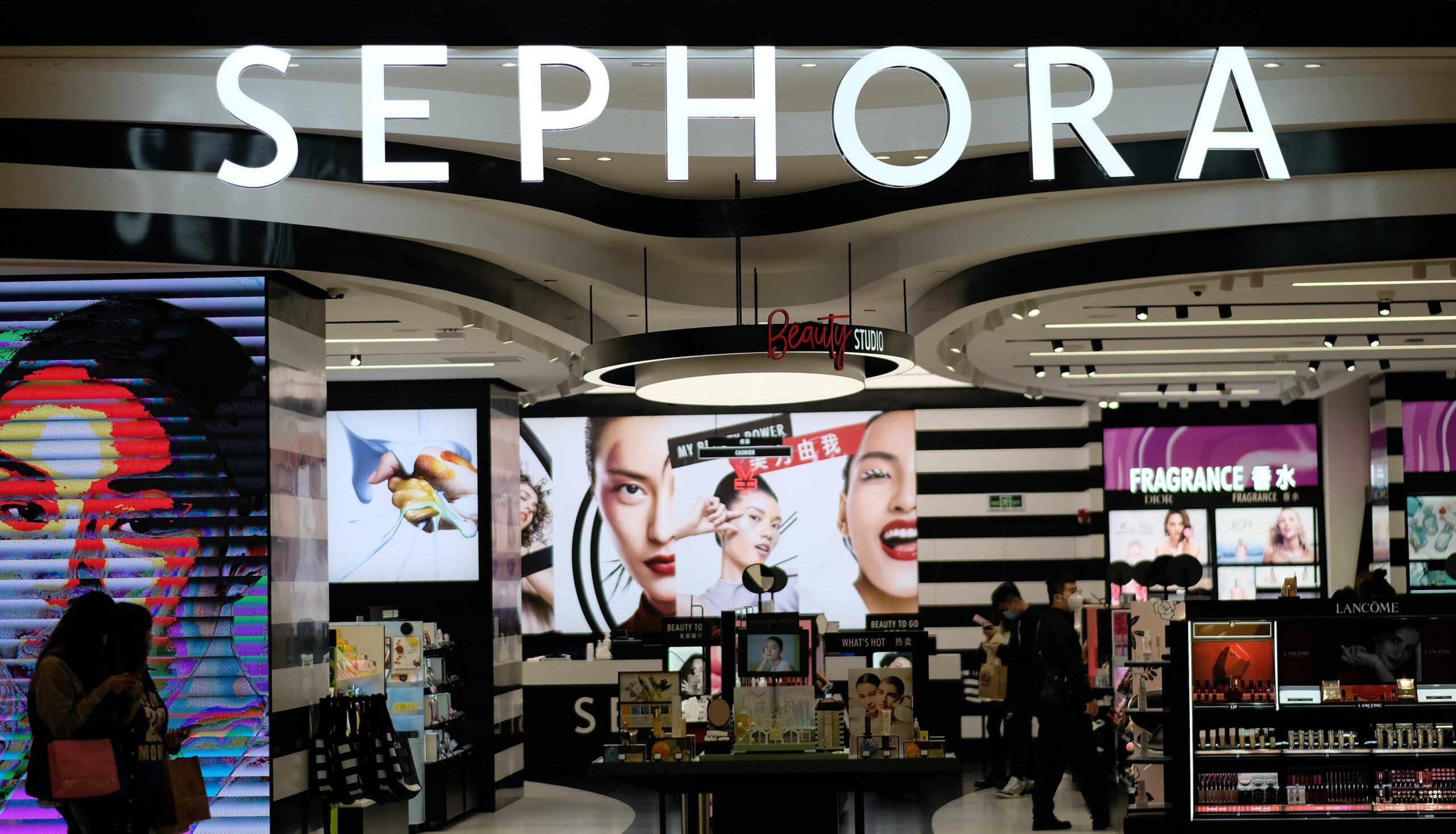
Sephora operates thousands of stores worldwide but has an obvious hole in its European distribution: It hasn’t had a retail presence in the United Kingdom in almost 18 years.
That’s about to change. Last week, speculation that the LVMH-owned beauty retailer was plotting its re-entry into the market — which were first prompted last July when it acquired British prestige beauty e-tailer Feelunique — was confirmed.
This month, Sephora is returning to the UK. The roll out will start this week, with the transition of Feelunique’s site to Sephora UK, at sephora.co.uk, on Oct. 17. A Sephora store will open in London in March 2023 at a yet-to-be-disclosed location.
Sephora never had a meaningful presence in the UK. It entered the market in 2000, but the competition was too fierce; department stores and pharmacy chain Boots cornered the market on selling prestige beauty and Sephora couldn’t break through. It closed its total nine stores within five years.
But a lot has changed in the nearly two decades since Sephora left the UK. In the early 2000s, the retailer was still establishing itself as a prestige beauty seller. Now, Sephora has become a worldwide beauty authority. Its buy-in and support can take a brand from obscurity to a multi-hundred-million-dollar acquisition.
Though its profile has risen, Sephora still has to tread carefully to make its UK re-entry a success.
CLICK TO READ MORE
To start, to compete with about 2,200 Boots locations and department stores like Harrods, Selfridges and Harvey Nichols, Sephora needs to open more than one outpost.
The UK’s department store fleet has best-in-class product assortments, experiences, services and more, while Boots is omnipresent in the country and has a larger beauty assortment than is standard at American stores. (Select stores even sell Chanel and Dior). There’s also SpaceNK, which sits at the high end of beauty retail in the UK with around 70 doors. With a category as sensory as beauty is, it will be difficult for Sephora to make a splash in the market with just one retail location when it’s so heavily outnumbered by its competitors.
Perhaps Sephora has a better shot to stand out online, but e-tailers Cult Beauty and Look Fantastic have built British customer bases and name recognition in a way Sephora hasn’t yet. (It will, of course, benefit from taking over Feelunique, another known name in British beauty retail.)
There’s a big assumption that in order to discover new things it has to be in a prim and proper environment and within the confines of an established, upscale retailer. But I’m not sure that’s the case for the UK customer: Boots, the go-to for beauty at all price points, is also the region’s leading pharmacy chain.
Still, experts think Sephora has potential in the UK — as long as it enters with authority.
Millie Kendall, founder and chief executive officer of The British Beauty Council, sees a “reasonably good gap” in the UK beauty scene. She estimated that opening a fleet of 25 to 30 stores “really quickly” could help Sephora establish a foothold in a market where they’ve had no presence for almost two decades.
“People aren’t going to trek from the northeast of England down to the southwest of England to a Sephora,” Kendall said.
The right mix of brands is critical (Sephora last week told WWD that it will sell plenty of exclusive lines to the country, including Tarte Cosmetics, One/Size by Patrick Starrr, Ilia, Makeup by Mario, Skinfix and its own private label), but long-term success will come down to store size, format, and most importantly, location.
Kendall makes an important distinction between the UK and US beauty markets, the latter of which already has hundreds of Sephora doors.
Despite nearly every American department store’s attempt to revamp its beauty floor, shoppers in the US still prefer Sephora or Ulta Beauty. More recently, Target and Walmart have invested in the category, seeing opportunity among a changing consumer who differentiates less by channel and price point.
In the UK, however, department stores — especially those in London — are perennial beauty destinations for both British consumers and tourists.
“People want the green Harrods bag or the yellow Selfridges bag. I can’t tell you what the Nordstrom shopping bag looks like,” said Kendall.
Still, she noted that the closures of department stores Debenhams and House of Fraser left a “big hole in beauty” Sephora could fill. Those retailers had a strong regional hold on cities outside of London like Manchester, Leeds, Newcastle, Glasgow, Bristol and Norwich, all of which Kendall identified as top potential locations for Sephora.
“That’s quite an interesting marketplace,” she said. “If Sephora was smart, they would pick that up.”



